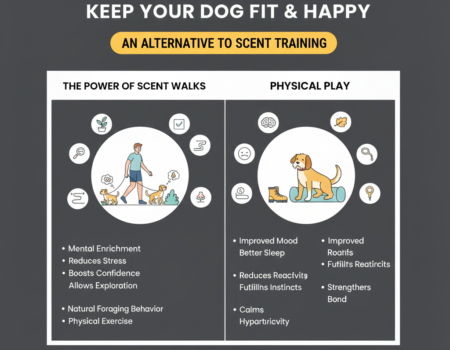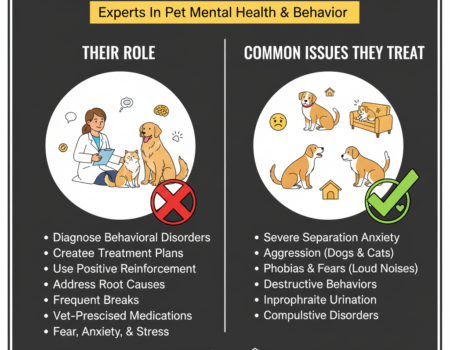What is a Dog Breed?
Dog breeds come in many shapes and sizes. They are a key part of understanding dogs. A dog breed is a group of dogs bred for certain traits, like looks and behavior. Knowing about dog breeds is important for anyone thinking of getting a dog.
This knowledge helps people choose the right dog for their home. It ensures that dogs and their owners are happy together.
Let’s dive into the world of dog breeds. We’ll look at different types, their traits, and why they matter to us.
Key Takeaways
- Dog breeds are groups of dogs selectively bred for specific traits.
- Understanding dog breeds aids in making informed ownership decisions.
- Canine classifications help identify dog characteristics and behaviors.
- Different breeds are suited for various lifestyles and environments.
- Knowledge of dog breeds contributes to better care and training.
Definition of a Dog Breed
The definition of a dog breed means knowing groups of dogs with special traits, family history, and behavior. These groups have unique dog breed characteristics like size, coat type, and color. These traits help define a dog breed and guide breeding and ownership.
Breed standards from groups like the American Kennel Club (AKC) make these traits clear. This helps breeders and owners know what each breed is like. Knowing what a dog breed is helps with choosing the right dog for your life.
Understanding the definition of dog breed shows the amazing variety of dogs. Each breed has its own history and traits that affect its health and behavior. This makes knowing about breeds key for being a good dog owner.
What’s a Dog Breed?
A dog breed is a group of dogs with specific traits, bred for certain purposes. Knowing about these groups helps us see the variety in dogs. It also makes us appreciate our canine friends more.
Understanding Canine Classification
Canine classification groups dogs based on their traits and characteristics. There are many types, like herding, sporting, and toy breeds. Each group has a special purpose, showing the breed’s history and use.
For example, herding breeds are great at managing animals. Toy breeds are perfect as pets and lap dogs.
The Importance of Dog Breeds
Dog breeds are more than just categories. They have unique qualities that fit different lifestyles. Some breeds are better for families, while others love active lives.
Knowing these differences helps dog owners make better choices. It ensures a happy life for both dogs and people. Also, some breeds hold cultural importance, showing their vital role in our societies.
Characteristics of Dog Breeds
Dog breeds have many traits that make them unique. These traits include physical features and temperament. Knowing these helps people choose the right breed for their lifestyle.
Physical Attributes
Physical traits of dogs are key in defining breeds. Size, coat type, and color are obvious differences. For example, the Dachshund is small and agile, while the Great Dane is tall.
This variety affects how easy a breed is to care for. It also impacts where they can live well.
Temperament and Behavior
Dog temperaments and behaviors differ greatly. Some breeds, like Golden Retrievers, are friendly and playful. They’re perfect for families.
Others, like Akitas, may be more reserved or protective. They need more experienced owners. Knowing a breed’s temperament is vital for a good match.
Types of Dog Breeds
Choosing a dog means knowing the different types available. Purebred dogs and mixed breed dogs have unique qualities. Each type suits different owners based on their needs and likes.
Purebred Dogs
Purebred dogs come from a known lineage, following breed standards. They are bred for specific traits, making their size, coat, and behavior predictable. Examples are Labrador Retrievers, German Shepherds, and Golden Retrievers.
These dogs are consistent in looks and behavior. But, they might have health issues common in their breed.
Mixed Breed Dogs
Mixed breed dogs are the result of two or more purebred dogs being crossed. They come in a wide range of shapes, sizes, and temperaments. Finding out a mixed breed dog’s background can be hard, but it’s exciting.
Many mixed breed dogs have *hybrid vigor*. This means they might be healthier than purebred dogs. They’re great for those who want a loving pet without the expectations of a purebred.
Popular Dog Breeds in the United States
In the United States, some dog breeds are more popular than others. Knowing the most popular breeds helps people choose the right dog for their lifestyle. These breeds are loved by families, singles, and city dwellers alike.
Top 10 Most Loved Breeds
The table below shows the top 10 dog breeds in the United States. It highlights their appeal based on their temperament, adaptability, and friendliness.
| Rank | Dog Breed | Characteristics |
|---|---|---|
| 1 | Labrador Retriever | Friendly, outgoing, and high energy. |
| 2 | French Bulldog | Affectionate, playful, and adaptable. |
| 3 | German Shepherd | Loyal, courageous, and intelligent. |
| 4 | Golden Retriever | Intelligent, friendly, and devoted. |
| 5 | Bulldog | Gentle, easygoing, and brave. |
| 6 | Poodle | Smart, active, and friendly. |
| 7 | Beagle | Curious, friendly, and merry. |
| 8 | Rottweiler | Confident, fearless, and good-natured. |
| 9 | Dachshund | Curious, playful, and clever. |
| 10 | Siberian Husky | Friendly, gentle, and alert. |
Trends in Dog Ownership
Today, dog owners are choosing breeds that fit their busy lives. In cities, people prefer smaller dogs that need less space. Busy schedules also lead to choosing calm breeds. Knowing these trends helps find the perfect dog for any lifestyle.
Best Dog Breeds for Families
Choosing a dog for your family means knowing what different breeds need. Some breeds are perfect for busy homes. Breeds like Labrador Retrievers and Beagles are great with kids because they’re playful and loving.
It’s also important to think about the size of the dog. This helps families decide what’s best for their lifestyle and home.
Child-Friendly Breeds
Choosing a family dog that’s good with kids is key. Here are some top picks:
- Labrador Retriever: Known for their gentle nature and loyalty, Labradors are excellent around kids.
- Beagle: Their playful temperament makes Beagles a fun-loving addition to any family.
- Golden Retriever: Famous for their friendly disposition, Golden Retrievers thrive in family settings.
- Cocker Spaniel: These dogs are known for their affectionate nature, making them great for children.
Large vs. Small Dog Breeds
The size of the dog matters when picking a family pet. Big dogs need lots of space, while small dogs are okay in smaller homes. Here’s a look at both:
| Aspect | Large Dog Breeds | Small Dog Breeds |
|---|---|---|
| Space Requirements | Need ample space to roam and play. | Adapt well to smaller living spaces. |
| Exercise Needs | Require more regular exercise and outdoor time. | Easier to manage exercise levels indoors. |
| Temperament | Often protective and good with children. | Typically affectionate and adaptable. |
| Maintenance | May need more grooming and health care. | Generally lower grooming costs and simpler health care. |
Hypoallergenic Dog Breeds
For people with allergies, finding the right dog can be tough. Hypoallergenic dog breeds are a good option. They make fewer allergens than regular breeds. Knowing what makes a dog hypoallergenic is key for those wanting a pet without allergy issues.
What Makes a Dog Hypoallergenic?
Hypoallergenic dogs have hair that sheds less and makes less dander. Dander is the main cause of allergies. These dogs have hair like human hair, which catches allergens better.
When picking hypoallergenic dogs, coat type and grooming are important. They affect how much allergens are produced.
Top Hypoallergenic Breeds
Several breeds are known for being hypoallergenic. They include:
- Poodle
- Bichon Frise
- Portuguese Water Dog
- Shih Tzu
- Yorkshire Terrier
- Maltese
Each breed has its own traits and needs. For example, Poodles are smart and versatile, great for families. Bichon Frises are fun and loving, ideal for those who want a pet friend.
Small Dog Breeds: Pros and Cons
Owning small dog breeds has its own set of good and bad points. They are perfect for living in apartments and are easy to take on trips. They also need less exercise than bigger dogs. But, it’s important to know about the health issues they might face.
Benefits of Owning a Small Dog
Small dog breeds offer many benefits to their owners. Here are some key points highlighting their advantages:
- Less Space Required: Smaller dogs fit well in small living spaces, great for city folks.
- Lower Exercise Demands: Many small dog breeds need less exercise, perfect for those with busy lives.
- More Manageable Care: Their size makes grooming and handling easier.
- Companionship: Small dogs often form strong bonds with their owners, offering love and friendship.
Common Health Issues
While the benefits are clear, it’s crucial to watch out for common health issues in small dogs. Some breeds may face specific challenges, such as:
| Health Issue | Description |
|---|---|
| Dental Problems | Small dogs often have dental issues because of their small mouths. |
| Kneecap Dislocation | Known as patellar luxation, this condition is common in various small breeds. |
| Heart Disease | Some small dog breeds are more prone to heart problems. |
Choosing the Right Dog Breed for You
Choosing a dog is a thrilling yet crucial decision. It’s not just about looks. Lifestyle factors are key. First-time dog owners need to think about how a pet fits into their daily lives.
Assessing Your Lifestyle
Knowing your lifestyle helps narrow down your options. Here are some key factors to evaluate:
- Living Space: Think about whether you live in an apartment or a house.
- Activity Level: How often do you go outside or exercise?
- Time Commitment: How much time can you give daily for training, playing, and grooming?
- Family Dynamics: Do you have kids or other pets at home?
Considerations for First-Time Dog Owners
First-time dog owners have special needs. Each breed has its own temperament and training needs. This can affect your experience. Here are some important points to consider:
- Temperament: Look for breeds known for being friendly and adaptable.
- Training Needs: Some breeds need more training and socialization.
- Grooming Requirements: Think about whether you prefer a low-maintenance grooming routine.
By looking at these factors, first-time dog owners can make a better choice. This choice will match their lifestyle and improve their bond with their new pet.
Puppy Training and Dog Breed Differences
Understanding puppy training is key for pet owners, especially with dog breed differences. Each breed has its own traits that shape their training needs. Tailoring training to fit each breed can greatly improve success and encourage good behavior in dogs.
Training Needs by Breed Type
Different dog breeds have different levels of intelligence and temperaments. For example, herding breeds like the Australian Shepherd do well with positive reinforcement. On the other hand, stubborn breeds like Bulldogs need consistent and authoritative training. Knowing these breed-specific needs helps make training more effective and fun.
Socialization for Different Breeds
Socialization is crucial in puppy training and varies by breed. Protective breeds like the German Shepherd need to meet many people and places to avoid being too protective. Friendly breeds like the Cavalier King Charles Spaniel need socialization to stay friendly. Understanding these differences helps raise well-adjusted dogs that behave well in all situations.
| Dog Breed | Training Approach | Socialization Needs |
|---|---|---|
| Border Collie | Structured and rewarding | Exposure to various settings |
| Shih Tzu | Positive reinforcement | Frequent social interactions |
| Rottweiler | Firm but fair | Early exposure to people and dogs |
| Bull Terrier | Consistent and firm | Varied social experiences |
Dog Breed Health and Care Requirements
Knowing what health and care needs different dog breeds have is key for good ownership. Each breed has its own set of needs, like health issues and grooming. Learning about common health problems can help owners keep their pets healthy.
Common Health Issues by Breed
Different breeds face specific health problems because of their genes. Big dogs like Great Danes and German Shepherds often get hip dysplasia and heart issues. Small dogs, like Chihuahuas, might have dental problems and patellar luxation.
Knowing these health issues helps owners prevent problems and make smart health choices for their pets.
Grooming and Maintenance Needs
Grooming needs vary by breed, affecting how much time owners spend on their dogs. Long-haired breeds, like Afghan Hounds and Shih Tzus, need regular grooming to avoid mats and tangles. Short-haired breeds, such as Beagles and Boxers, have simpler grooming needs, needing only occasional brushing.
Understanding these grooming needs is crucial for keeping dogs comfortable and healthy. It’s a big part of caring for a dog.
Understanding Breed Standards and Registries
Dog breed registries are key in keeping breeds true to their standards. Organizations like the American Kennel Club (AKC) and the United Kennel Club (UKC) set the rules. They make sure breeders follow these rules, which include what each breed should look like and act like.
Major Dog Breed Registries
These registries help breeders raise dogs responsibly. The AKC is well-known in the US for its work with purebred dogs. It gives people trustworthy info about dogs. The UKC focuses on dogs that are good at things and can adapt well.
These groups are vital for making sure everyone knows the rules. Breeders and owners must follow these standards.
What is a Breed Standard?
A breed standard is a detailed guide for each breed. It talks about things like fur, color, and behavior. It helps breeders make choices that keep their dogs healthy and happy.
For people looking to get a dog, knowing the breed standard is important. It shows if a dog is really a purebred. It also helps find a breeder who follows the rules.
Conclusion
Understanding dog breeds is key when thinking about getting a dog. Each breed has its own traits, like how it acts and looks. This means some breeds fit better into certain homes than others.
When picking a breed, think about its energy level, grooming needs, and how it gets along with kids or other pets. This careful thinking helps create a happy home for both you and your dog. Talking to good breeders or rescues can also help you learn more about different breeds.
Getting a dog is about making a strong connection. By choosing a breed that fits your life, you start a long-lasting friendship. So, learn as much as you can and pick the right dog for you. Your perfect dog is waiting for you.













No Comment! Be the first one.